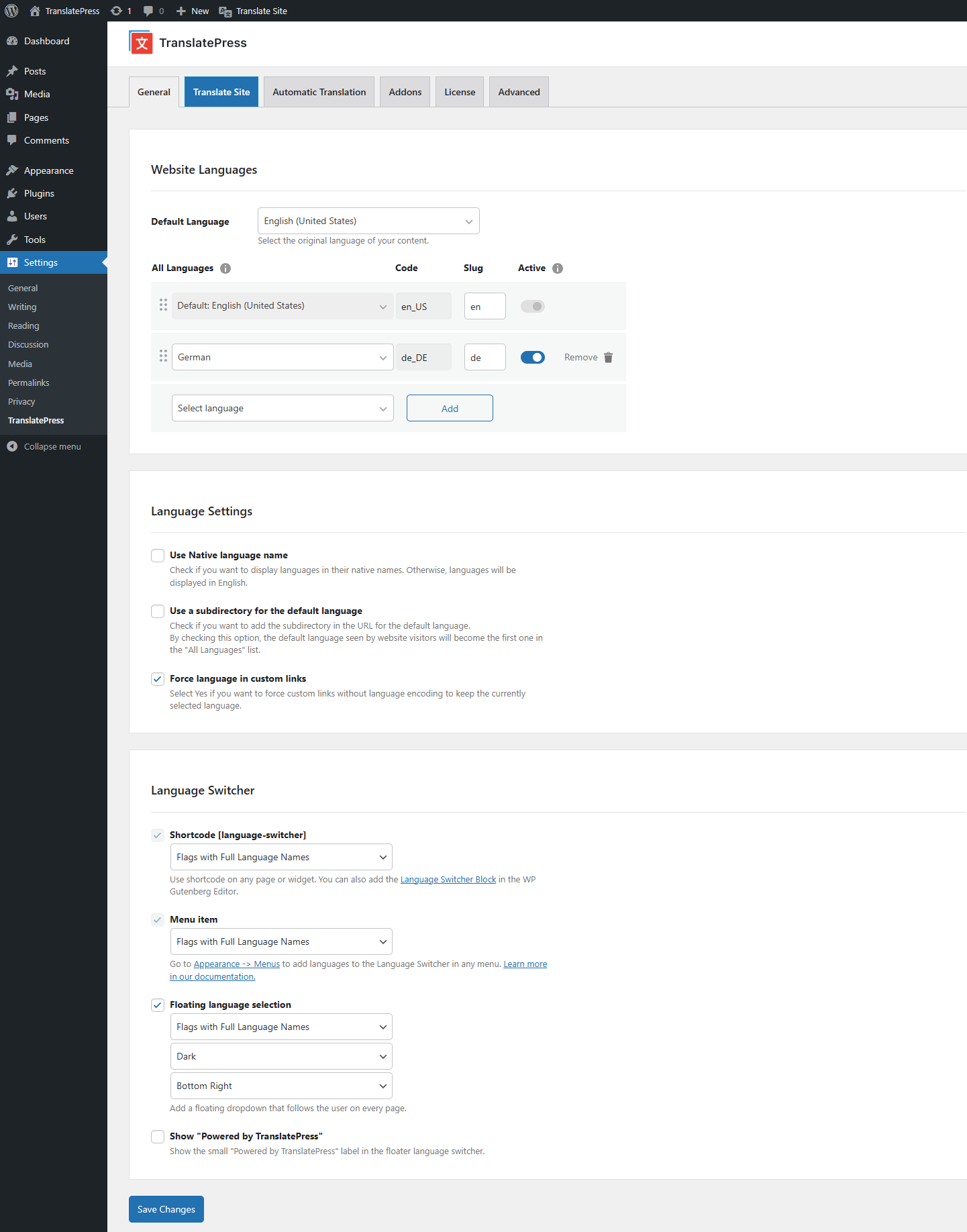You can access the TranslatePress plugin settings in the administrator area in the menu under Settings -> TranslatePress.
It can also be accessed both from the frontend and administrator area from the Admin Bar under the newly created button under the Settings drop-down.
Default Language
Select the original language from the drop-down your website was written in.
By default the language is inherited from the WordPress language that you can setup on install or change from Settings -> General.
Translation Languages
Interface which allows you to select the languages you wish to make your website available in. You just have to select the language from the drop-down and click the Add button.
Actions you can perform on the languages:
- edit the slug of the language that will appear in the URLs of the site from the Slug input
- make the language active for the visitors of the site or only available for translation for the administrator and the translator by checking or un-checking the Activate checkbox ( Feature available only with Extra Language add-on )
- remove the language by clicking the Remove link ( this will not delete the existing translations from your database)
- rearrange the order of the languages with the drag-and-drop interface. This will determine the order in the language switcher floater and shortcode.
- placing a translated language in the first position will make it the first language to show to website visitors if the option Use subdirectory for default language is active
Formality on languages
For some languages,there will be available a dropdown select where you can choose between Formal/Informal translation.
The choice determines the pronouns and related words used in your translation.
*This feature is available only for TranslatePress AI and DeepL.
Display languages in their native names
Select Yes if you want languages to display their native names. Otherwise, they will be displayed in English.
Use subdirectory for default language
Select Yes if you want to add the language slug in the URL for the default language. For example www.myhomepage.com/en/ instead of www.myhomepage.com when visitors are viewing the site in its default language.
By selecting Yes, the default language seen by website visitors will become the first one in the “All Languages” list. This means that you can make one of the translated languages be the language to display when visitors access your website without language encoding in the URL ( such as www.myhomepage.com, without /en/ for example ).
Force language in custom links
Select Yes if you want to force custom links without language encoding to add the language slug in the URL for the default language.
Google Translate
Enable or disable the automatic translation of the site with Google Translate. Existing translations will be not be affected.
Note: Not all languages support automatic translation. Please consult the supported languages list.
Language Switcher
You have three options to display language switchers on the site:
- Shortcode (Use the [language-switcher] shortcode on any page or widget. You can also add the Language Switcher block in the WP Gutenberg Editor).
- Menu item (In Appearance -> Menus you can add Language Switcher Languages in any menu).
- Floating language selection (Have a floating dropdown following the user on every page). You can customize the switcher design from the TranslatePress settings and specify things like its position, background color, text color, border style, and much more.
You can also explore all language switcher options to find the one that best fits your website.
Translate Site
Clicking on this tab will open the Translation Editor in the frontend of the site where you can begin translating your site.
Advanced Settings
Find out about options that help fix certain issues with integrating TranslatePress into your project here.
